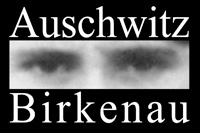




Sonderkommando
(German: Special labor detail)
In April 1942, shortly after the mass extermination of Jews began in Birkenau, the first Sonderkommando was created there. It was made up exclusively of Jewish prisoners. Some of them worked in barracks where they performed the sorting of clothing and other property of the murdered and preparing it for transport to the Kanada warehouses. Others were employed in directly operating the gas chambers—dragging corpses out, extracting gold teeth, cutting off hair, washing away traces of blood and excrement from the floors. Another group of prisoners dug pits—the mass graves into which corpses were thrown at first. By mid‑1942, there were already two Sonderkommandos working at the Little Red and Little White Houses. Soon after, some of them were sent to dig up the mass graves, disinter the bodies, and burn them on pyres. When this task was completed in early December 1942, these prisoners were murdered in the gas chamber. The chronology of events is not completely clear; it is known that at least two groups of Sonderkommando prisoners attempted to escape around this time. As a result, the SS murdered all the prisoners from the gas chamber crews. Prisoners from transports arriving to Auschwitz were formed into a new Sonderkommando.
In February 1944, when fewer transports were arriving, half of its 400 members were murdered. As soon as the Sonderaktion “Ungarn” began, the Kommando was expanded to about 900 prisoners. In September 1944, the size of the Sonderkommando was again reduced by 200 prisoners. Anticipating further gambits of this sort, the members of the Sonderkommando put up resistance in October 1944. As a result of the mutiny and executions performed on that day by the SS men, about 450 from 660 prisoners of this Kommando were killed. Reduced in size to about 200, and later to 100 prisoners, the Sonderkommando remained in the camp until evacuation in January 1945.
See also: Sonderkommando manuscripts
